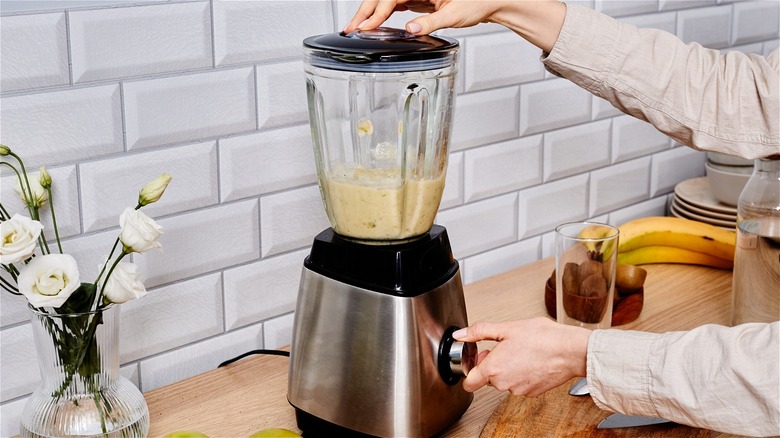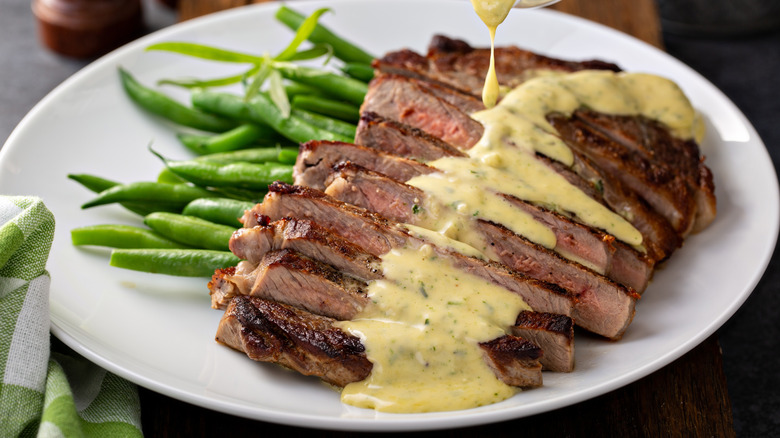The Blender Step You Shouldn't Forget When Making Bearnaise Sauce
We may receive a commission on purchases made from links.
Five sauces, known as the "French Mother Sauces," are the base for all the sauces we enjoy today. Whether tossed with pasta, drizzled on cooked veggies, or placed in a bowl for dipping, every sauce starts with either béchamel, velouté, Espagnole, tomato, or hollandaise sauce. Master these sauces and techniques, and you can upgrade every dish from the bland grilled chicken breast you've made a million times to steamed broccoli into something more elegant and infinitely more delicious.
According to the Michelin Guide, in the 19th century, Marie-Antoine Carême designated allemande, béchamel, velouté, and Espagnole as the building blocks for all sauces in his cookbook "L'Art de la Cuisine Française au Dix-Neuvième Siecle." By the 20th century, Auguste Escoffier amended that list replacing allemande with tomato sauce and adding hollandaise.
Béarnaise is the velvety sauce often enjoyed with a steak at fancy steakhouses. It is the child of hollandaise, the delicious sauce served on top of poached eggs in the brunch favorite, eggs Benedict, and the bougie cousin to mayonnaise. While mayonnaise is made with egg yolks and oil, hollandaise sauce emulsifies egg yolks with clarified butter and adds lemon juice, binding them together slowly in a double boiler (per Healthline). Although similar, what sets béarnaise apart from hollandaise is the addition of a white wine vinegar reduction, which gives béarnaise its signature tanginess. While it is traditionally made by whisking the ingredients by hand, using a blender makes it easier and faster.
Creamy béarnaise sauce in minutes
Hollandaise and the many variations derived from the sauce are notoriously challenging, with a few common mistakes. Melted butter and acids don't want to blend, so the proper technique is critical to prevent the sauce from breaking. Hollandaise and béarnaise must be constantly whisked to emulsify the ingredients, but whisking too quickly can split the sauce into a gloppy mess. While the sauce requires gentle heat to thicken it, the eggs will scramble if the burner is too hot (per Recipe Tin Eats).
For greater success in making béarnaise sauce, some chefs now use a blender to combine the ingredients and reduce the risk of splitting the sauce. A white wine vinegar reduction is made by combining the vinegar, white wine, herbs, and shallots in a small saucepan until the mixture is infused and reduced. Egg yolks are whizzed in the blender with the infused vinegar while clarified butter or ghee is very slowly drizzled in. After a few minutes, a creamy béarnaise sauce is created, saving your arm ten minutes of whisking.
Since the sauce is temperature sensitive, Food and Wine suggest warming the blender with hot tap water before adding any ingredients. Allow the carafe to warm up for a few minutes, then dump out the water and thoroughly dry the inside of the blender before beginning the recipe. This step is essential to prevent the butter from seizing when added to a cold blender.

